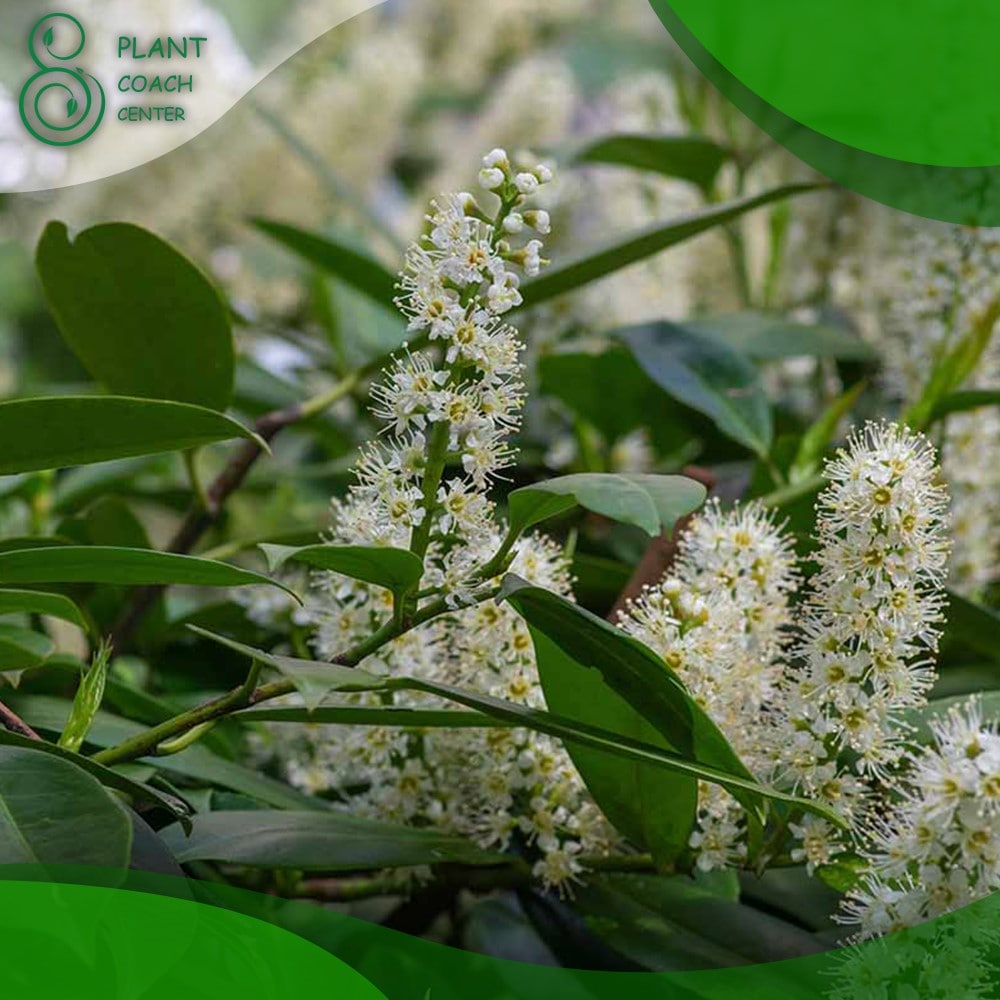Introduction to When to Prune Cherry Laurel
Welcome to the world of cherry laurel pruning, where knowing when to trim your lush greenery can make all the difference in its health and aesthetics. In this article, we’re diving straight into the heart of the matter: timing. Pruning your cherry laurel at the right time isn’t just a matter of convenience; it’s the secret to a thriving, vibrant garden.
We’re here in plantcoachcenter.com to guide you through the seasons , from spring to fall, revealing the optimal moments to grab your pruning shears and get to work. Whether you’re a seasoned gardener or just starting out, understanding the perfect timing for cherry laurel pruning will set you on a path to success. So, let’s roll up our sleeves and explore the art of timing in cherry laurel care.
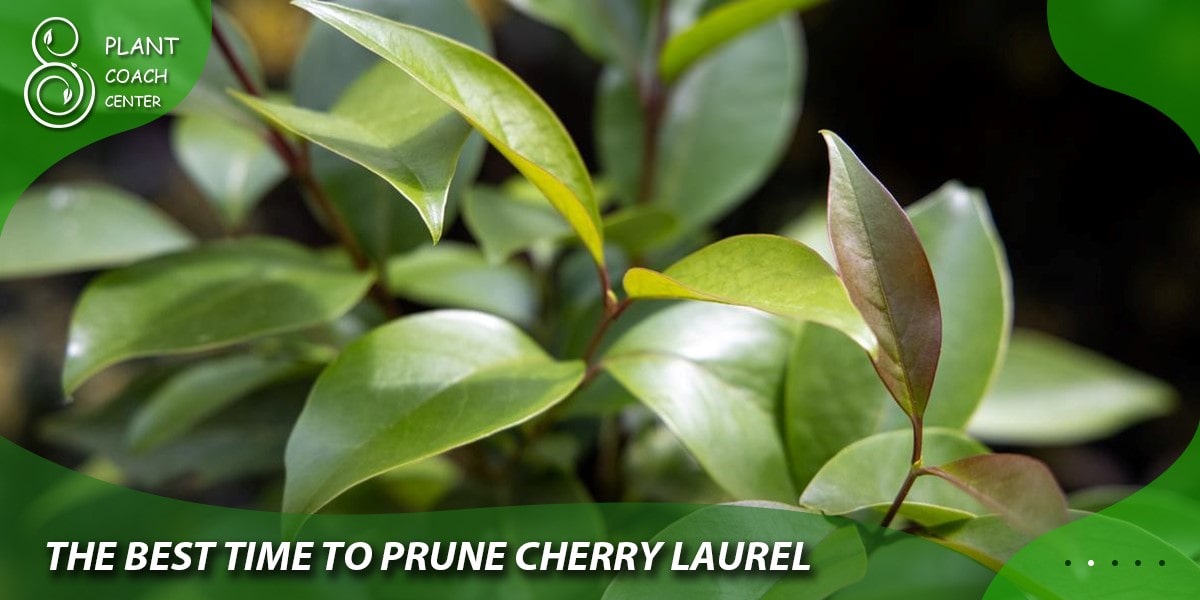
The Best Time to Prune Cherry Laurel
Pruning your cherry laurel at precisely the right moment can be a game-changer for your garden’s overall health and appearance. Timing is critical, and understanding when to wield your pruning shears is the key to success. Let’s take a closer look at the seasons and how they impact cherry laurel pruning.
Spring Pruning
Spring emerges as the prime time for cherry laurel pruning, and here’s why. As the frosty grip of winter loosens, your cherry laurel awakens from its slumber. This is a period of rejuvenation, where the plant gears up for a season of robust growth. Pruning during spring capitalizes on this natural burst of energy, resulting in a thriving, luscious shrub.
The benefits are manifold. First and foremost, it encourages fresh growth, promoting a denser, more vibrant foliage. This lush greenery not only looks spectacular but also acts as an effective privacy screen. The removal of dead or diseased branches in spring ensures a clean slate for your cherry laurel to flourish.
Now, let’s talk technique. When spring arrives, grab your pruning shears and focus on removing the oldest branches, paying attention to the center of the shrub. This opens up the interior, allowing sunlight to penetrate deep into the plant, spurring new growth. When trimming, aim to maintain the shrub’s natural shape rather than forcing a particular form. Keep it simple, and your cherry laurel will reward you with a vibrant display throughout the season.
Summer Pruning
Summer, with its warm and sunny days, might seem like an opportune time to get your hands on those pruning shears. However, when it comes to cherry laurel, it’s a season that demands careful consideration. Here, we’ll delve into the specifics of summer pruning, outlining when and how to do it without putting your shrub at risk.
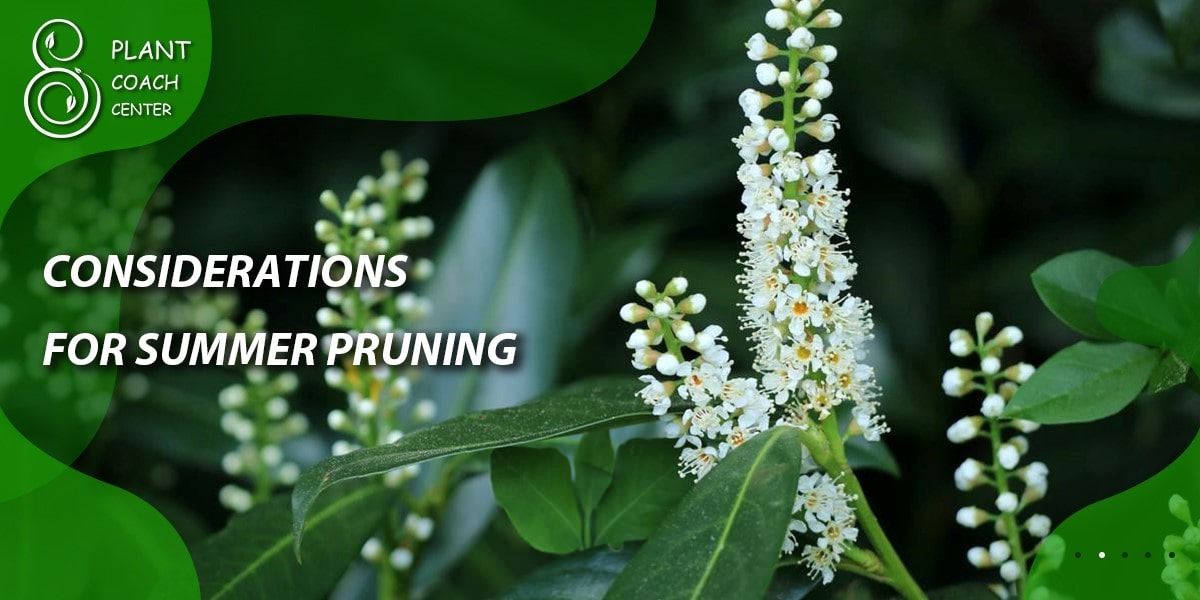
Considerations for Summer Pruning
Summer pruning is generally best approached with caution for cherry laurel. This season is marked by active growth, with the shrub putting its energy into flourishing. However, there are situations where a gentle trim can be beneficial:
- Shaping and Maintenance: If you’re keen on maintaining your cherry laurel’s shape or removing a few wayward branches, summer can be suitable. Opt for light pruning rather than heavy cutting to minimize stress on the plant.
- Disease and Pest Control: Should you notice signs of disease or pest infestation during summer, prompt action is essential. In such cases, targeted removal of affected branches can help contain the problem and prevent it from spreading.
- Hazardous Growth: If your cherry laurel has developed branches that pose a hazard, such as obstructing walkways or interfering with structures, these can be safely pruned during summer. Always prioritize safety when making such cuts.
Tips for Summer Pruning
When tackling summer pruning, keep these tips in mind to ensure you don’t harm your cherry laurel:
- Prune in the Cool: Opt for early morning or late afternoon to prune when the temperature is cooler. This reduces stress on the plant and minimizes the risk of heat-related damage.
- Limit Pruning: Stick to minimal pruning during summer. Remove only what’s necessary to address the specific issues at hand. Avoid heavy pruning, which can hinder the shrub’s ability to photosynthesize and recover.
- Clean Tools: Ensure your pruning tools are clean and sharp to create clean cuts that heal faster. Dirty or dull tools can lead to jagged wounds that are more susceptible to disease.
- Hydration: Adequate watering before and after pruning helps your cherry laurel recover smoothly. Proper hydration is key to minimizing stress during the warm months.
Summer pruning for cherry laurel can be done cautiously, focusing on specific needs without overwhelming the plant. By adhering to these considerations and tips, you can navigate summer with confidence, keeping your shrub healthy and thriving.
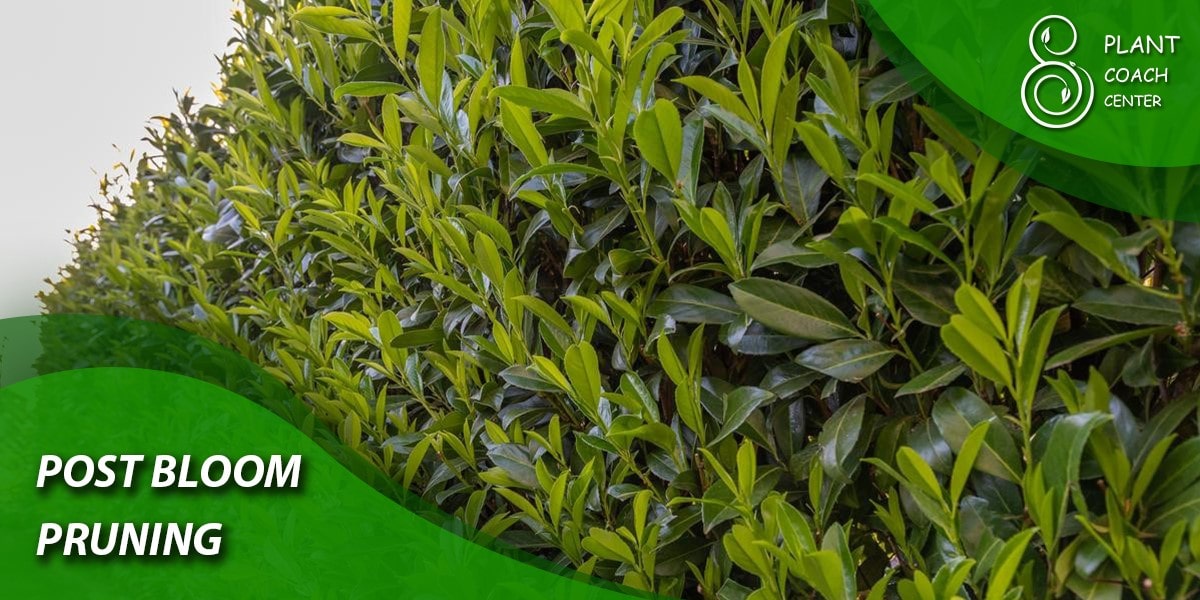
Post-Bloom Pruning
Once the splendid display of cherry laurel blossoms has dazzled your garden, it’s time to turn your attention to post-bloom pruning. This phase is a crucial part of cherry laurel care, as it sets the stage for future growth and ensures the ongoing health and beauty of your shrub. Here, we’ll explore the timing, benefits, and practical tips for post-bloom pruning.
Timing for Post-Bloom Pruning
Timing is everything when it comes to post-bloom pruning of cherry laurel. Ideally, you should aim to prune shortly after the blooming period. Why? Because this is when the shrub begins to shift its energy away from flowering and towards vegetative growth. Removing spent flowers and stems at this juncture redirects the plant’s resources, promoting healthier foliage and enhancing its overall vitality.
Promoting Healthier Growth
The essence of post-bloom pruning lies in the removal of spent flowers and stems, a process known as deadheading. By eliminating these spent parts, you prevent your cherry laurel from investing unnecessary energy in seed production. Instead, the plant can redirect this energy towards developing strong, new branches and leaves.
Additionally, deadheading reduces the risk of disease and pest infestations, as unhealthy or decaying plant material can attract unwanted attention. By snipping away these potential trouble spots, you create a healthier environment for your cherry laurel to thrive.
Tips for Post-Bloom Pruning
Now that we’ve clarified the ‘why,’ let’s delve into the ‘how’ of post-bloom pruning:
Use Clean Tools: Always begin with sharp, clean pruning shears. This ensures clean cuts that minimize the risk of damage or infection. Wipe down your tools with a disinfectant to prevent the spread of disease.
Prune Just Below the Bloom: When removing spent blooms, make your cut just below the flower cluster, back to where you see new growth or a healthy bud. This encourages branching and future blooms.
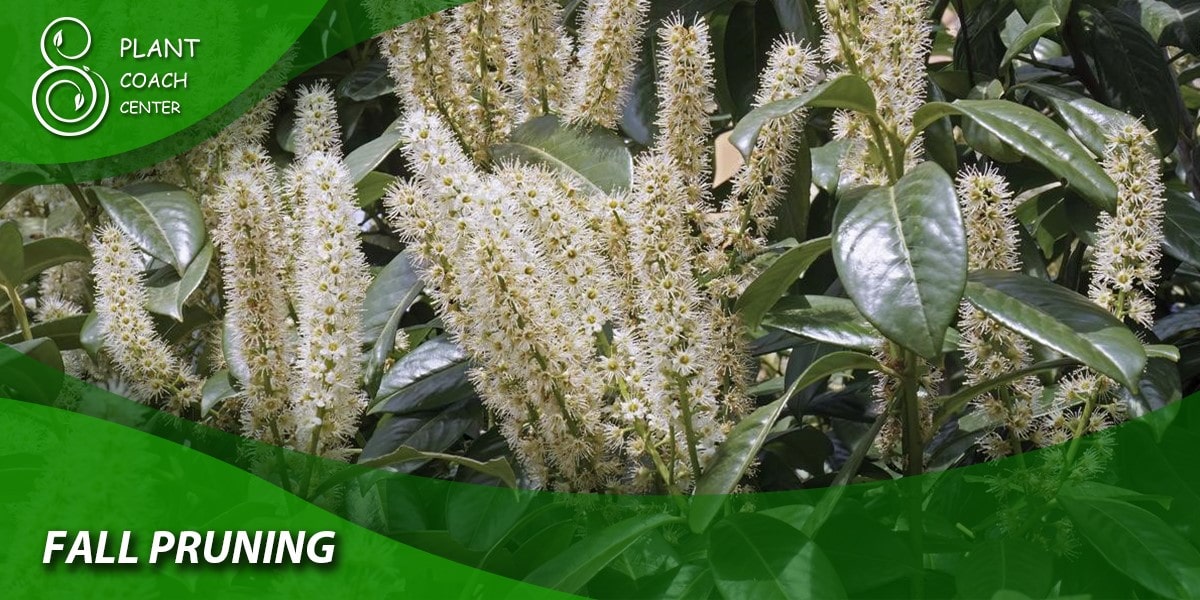
Trim Back Straggly Stems: If you notice any overly long or straggly stems, trim them back to maintain a well-balanced shape.
Dispose of Debris: Collect and dispose of the pruned material properly. Leaving it around the base of your cherry laurel can create a haven for pests and disease.
Water After Pruning: Give your cherry laurel a good soak after pruning to help it recover and reduce stress.
Post-bloom pruning is a simple yet crucial step in cherry laurel care. By carrying it out with precision and care, you’ll ensure that your shrub continues to flourish, gracing your garden with its lush foliage and vibrant blossoms year after year.
Fall Pruning
As the leaves start to turn and the air carries a hint of chill, it’s time to turn your gardening focus to fall pruning for your cherry laurel. This season plays a pivotal role in the long-term health of your shrub, preparing it for the harsh embrace of winter. Let’s delve into the essential considerations, the benefits of fall pruning, and why it’s crucial for safeguarding your cherry laurel.
Considerations for Fall Pruning
Fall pruning should be approached with a deliberate strategy to maximize its benefits. Here are some key considerations:
- Timing is Everything: The window for fall pruning typically begins in late summer and extends into early fall. It’s essential to complete your pruning well before the first hard frost, allowing the plant to heal before winter sets in.
- Dead and Diseased Branches: Prioritize the removal of dead or diseased branches. These are vulnerable points that can lead to problems during winter, such as increased susceptibility to ice and snow damage.
- Light Pruning: Fall is not the time for heavy pruning; it’s more about maintenance. Focus on shaping and tidying up your cherry laurel rather than aggressive cutting. Trim back any overly long or unruly branches to maintain a balanced form.
- Thinning the Interior: Opening up the interior of the shrub by removing some crowded branches allows better air circulation and sunlight penetration. This can deter fungal issues that tend to thrive in moist, shaded areas.
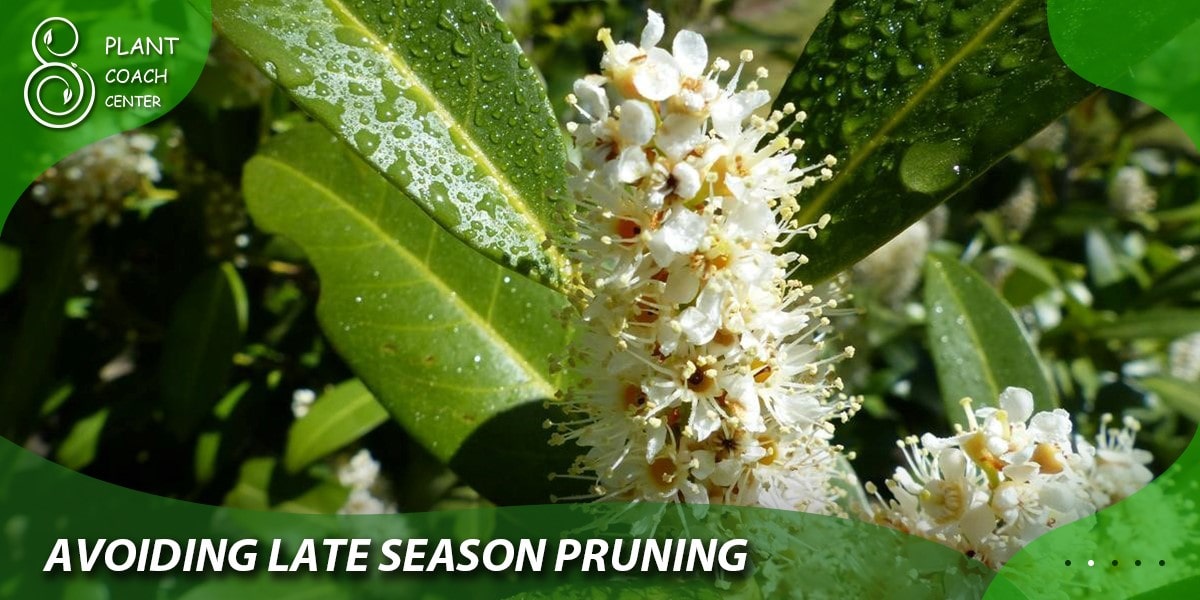
Preparation for Winter Months
Fall pruning serves as a crucial preparation step for your cherry laurel before winter’s arrival. Here’s how it helps:
Reduced Snow Load: By pruning the shrub back to its desired shape and size, you prevent it from becoming top-heavy, reducing the risk of branches breaking under heavy snow loads.
Minimized Disease Risk: Removing dead or unhealthy growth eliminates potential overwintering sites for diseases and pests. This proactive measure can save your shrub from infestations come spring.
Protecting Cherry Laurel from Winter Damage
Perhaps the most significant reason to undertake fall pruning is to shield your cherry laurel from the potential ravages of winter. When snow and ice accumulate on unpruned branches, they become susceptible to bending and breaking, potentially causing irreparable harm to your shrub.
By investing time in fall pruning, you invest in the longevity and resilience of your cherry laurel. It’s a preventive measure that ensures your shrub enters winter in its best possible condition, ready to face the challenges of the cold season with grace.
Avoiding Late Season Pruning
Late-season pruning, particularly as winter looms, might seem tempting, but it comes with its own set of risks and challenges. Here’s why it’s best to resist the urge to prune during this time:
- Winter Vulnerability: Late-season pruning leaves fresh wounds exposed during the harshest months. These wounds can become entry points for disease and pests, leading to potential damage or even death of your cherry laurel.
- Delayed Healing: In late fall, the plant’s natural processes slow down, hindering the healing of pruning wounds. This means that any cuts made during this period are more likely to remain vulnerable for an extended duration.
- Foliage Protection: Late pruning can inadvertently remove protective foliage that shields the plant from cold winds and frost. This exposes the plant to harsher winter conditions.
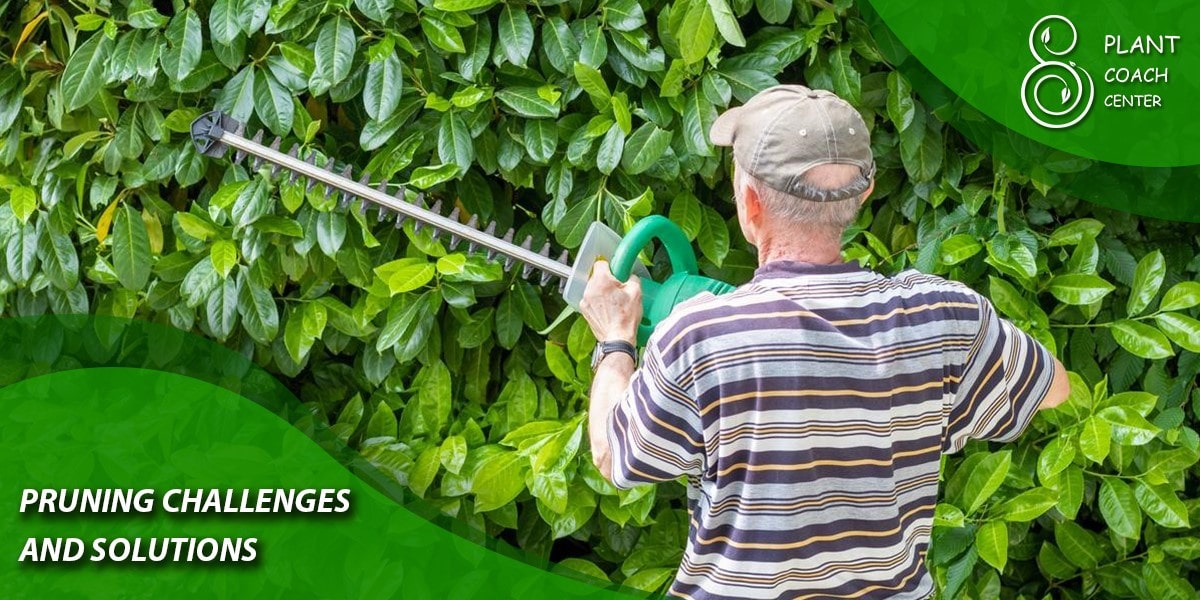
When Late-Season Pruning Might Be Necessary
While it’s generally wise to avoid late-season pruning, there are instances when it might be necessary. These could include addressing emergency situations, such as storm-damaged branches that pose an immediate risk to your safety or property. However, even in such cases, it’s essential to minimize the pruning to what’s absolutely necessary and provide appropriate protection to the wounded areas.
In conclusion, fall pruning is your cherry laurel’s shield against winter’s wrath, and late-season pruning should be approached with caution and only when unavoidable. Understanding the timing and importance of these practices ensures your shrub thrives year-round.
Pruning Challenges and Solutions
Pruning your cherry laurel can be a rewarding endeavor, but it’s not without its share of challenges. As you venture into the art of pruning, it’s essential to be prepared for potential hiccups along the way. In this section, we’ll explore some common issues that may arise during cherry laurel pruning and equip you with practical solutions to tackle them head-on.
Challenge 1: Overgrown Cherry Laurel
Issue: Over time, your cherry laurel may become unruly and overgrown, making it challenging to maintain its desired shape and size.
Solution: For an overgrown cherry laurel, take a gradual approach to bring it back under control. Start by removing a portion of the older, excessively tall branches. Avoid cutting too much at once, as this can stress the plant. Over the course of a few seasons, continue to selectively prune and shape the shrub, allowing it to recover between sessions.
Challenge 2: Uneven Growth
Issue: You may notice that your cherry laurel is exhibiting uneven growth, with some areas flourishing while others lag behind.
Solution: Address uneven growth by focusing on the underperforming areas. Prune back the vigorous branches to encourage more balanced growth. Additionally, consider thinning the dense areas to allow sunlight and air to penetrate to the weaker sections. This process can help restore symmetry over time.
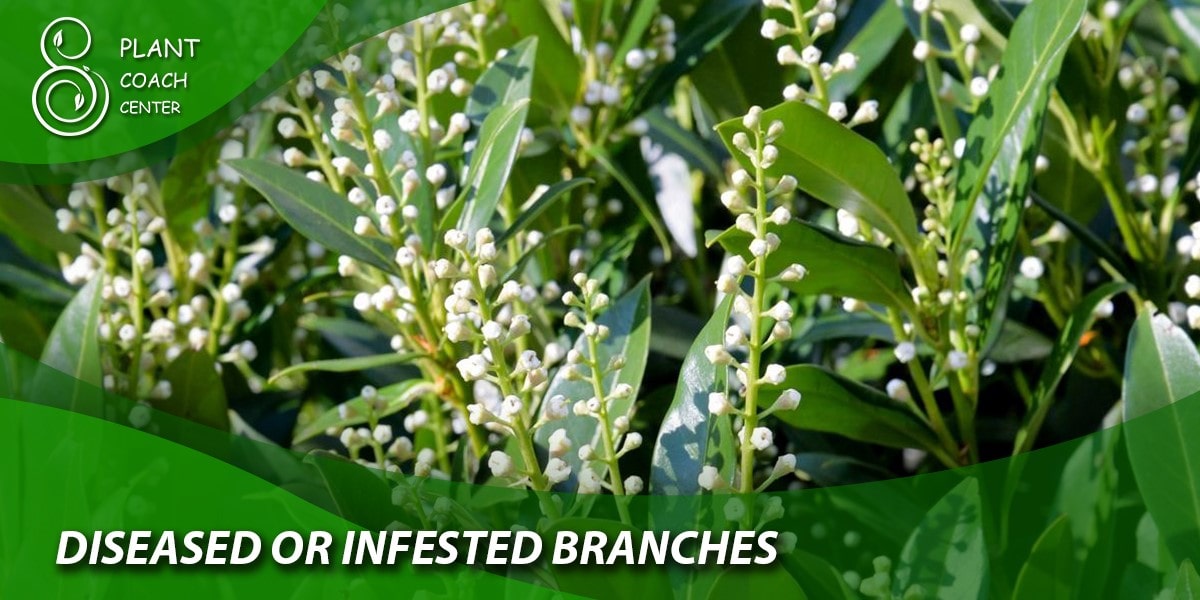
Challenge 3: Diseased or Infested Branches
Issue: The discovery of disease or pest infestations can be disheartening during pruning.
Solution: Promptly remove any diseased or infested branches using clean, sharp pruning shears. Make cuts at least several inches below the affected area to ensure complete removal. Dispose of the pruned material away from your garden to prevent the spread of disease or pests. Consider treating the plant with appropriate remedies to prevent future issues.
Challenge 4: Unwanted Suckers
Issue: Suckers, or fast-growing shoots from the rootstock, may appear at the base of your cherry laurel.
Solution: To eliminate suckers, use pruning shears to cut them off at ground level as soon as you notice their growth. Be diligent, as they can proliferate quickly. Regularly check and remove any new suckers to maintain a clean and tidy appearance.
Challenge 5: Winter Damage
Issue: Harsh winter conditions can lead to damage, such as broken branches or dieback.
Solution: To mitigate winter damage, practice proactive fall pruning to reduce the risk of branches breaking under the weight of snow or ice. Additionally, protect your cherry laurel with burlap or a similar material during severe winter weather. After winter, assess and prune damaged areas to encourage recovery.
By understanding and proactively addressing these common pruning challenges, you can navigate the process with confidence and maintain the health and beauty of your cherry laurel. Remember that patience and consistency are key to achieving the desired results over time.
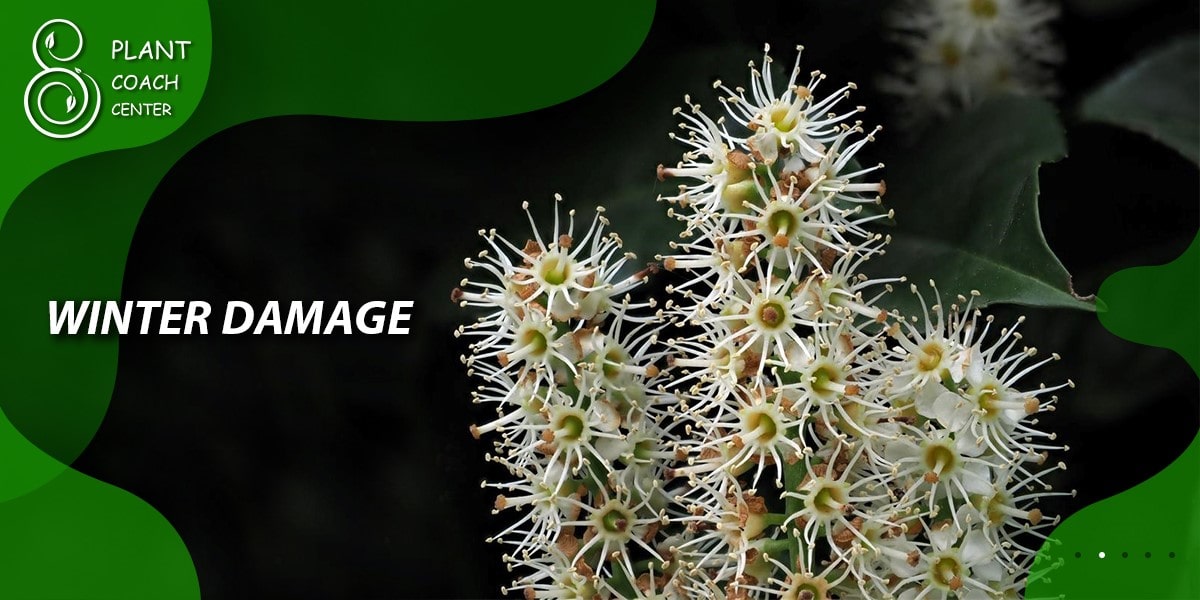
Conclusion
In conclusion, the timing of pruning for cherry laurel is a critical factor that can significantly impact the health and aesthetics of your shrub. Timing your pruning efforts in alignment with the seasons is essential. Spring, with its rejuvenating energy, is ideal for encouraging fresh growth, while summer should be approached with caution, focusing on specific needs. Fall pruning plays a pivotal role in preparing your cherry laurel for the challenges of winter, safeguarding it from potential damage.
It’s paramount to avoid late-season pruning, which can leave your shrub vulnerable to winter stress and pests. In summary, the key takeaway is simple: timing matters. By following the recommended timing practices outlined in this guide, you can ensure that your cherry laurel thrives year-round, gracing your garden with lush foliage, vibrant blooms, and robust health.
So, as you embark on your pruning journey, remember, patience and precision in timing are your allies in nurturing the beauty and vitality of your cherry laurel.
FAQ
When is the best time to prune cherry laurel?
Early spring or late summer, depending on your goals.
Can I prune cherry laurel in the winter?
It's best to avoid winter pruning to prevent damage.
How do I deal with an overgrown cherry laurel?
Gradual pruning over multiple seasons can help control overgrowth.
What should I do if I find diseased branches?
Promptly remove and dispose of diseased branches.
Is late-season pruning recommended?
No, late-season pruning can leave your plant vulnerable.
How can I maintain a balanced shape in my cherry laurel?
Prune selectively to encourage balanced growth.


